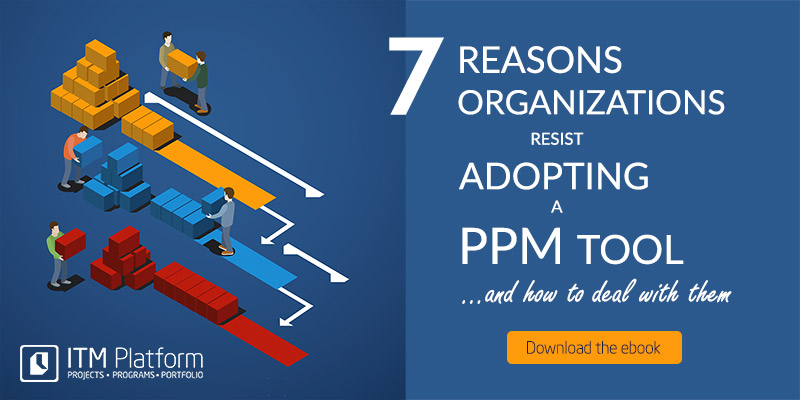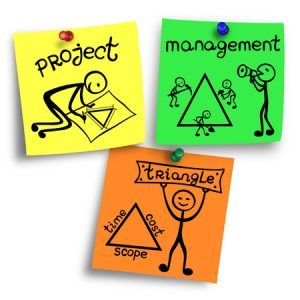
The methodology is well designed, the managers agree on the need to have reliable information on projects to make decisions and the entire corporate structure is ready to embark on portfolio management. But within a few months, it becomes clear that employees who should feed the system with data about their work are not fulfilling their obligations.
This has been a problem for hundreds of large and medium-sized companies, but luckily there are many tactics to deal with the problem of internal resistance.
In this article, we present a summary of our PMO guide on how to encourage the adoption of a PPM tool.
Try ITM Platform and discover how simple Software adoption can be
Advantages of PPM tools
PPM (Project Portfolio Management) software, responds to a basic need in any corporate environment: the coordination, monitoring and control of all projects to obtain the best possible use of the limited resources available.
A PPM tool can be used to support projects of any kind, for Innovation, IT, Operations, but also for strategy, marketing, or sales, as well as cross-organizational and transformation projects.
In all cases, PPM software will offer many benefits to your business:
- A single place for collaborative work between departments and teams
- Aggregate information for decision making
- Reduction of non-strategic projects
- Speed up project delivery times
- Save time spent on administrative work
Challenges in adopting PPM software
Unfortunately, this process won’t be without challenges. Like other software, it relies on the data fed into the system. If this isn’t done correctly, the effectiveness of the software will be compromised.
This affects almost all corporate software, not just PPM tools: Imagine a CRM without customer data. Or an ERP without invoices.
Despite the difficulties, PPM software is vital to compete against the best because it provides an unbiased and clear view of the status of the whole project portfolio.
That’s why you will need to manage two fundamental elements when embarking on the transition:
- A framework to manage the projects portfolio that is well integrated into the design of the organization
- An adoption plan that anticipates employee reactions to channel them in a positive direction
The adoption plan must also consider how non-technical components affect the resistance to change. For example: in some cases, resistance is due to objective problems in daily operations. In that scenario, it is important to listen to the objections and address them.
On other occasions, the resistance is political in nature or due to friction within the management team.
Click here to read our e-book and discover all the problems that can derail successful implementation and how to deal with them.


 Why make status reports?
Why make status reports? Customer acquisition & sales funnel, inbound/outbound lead, MQL, SQL and more
Customer acquisition & sales funnel, inbound/outbound lead, MQL, SQL and more As quoted in the PMBOK, project scope is the portion of project planning that requires determining “the work that needs to be accomplished to deliver a product, service, or result with the specified features and functions.” Scope Management consists of 3 different processes: planning, controlling and closing. To understand how to successfully manage scope, you must have a detailed understanding of these 3 facets:
As quoted in the PMBOK, project scope is the portion of project planning that requires determining “the work that needs to be accomplished to deliver a product, service, or result with the specified features and functions.” Scope Management consists of 3 different processes: planning, controlling and closing. To understand how to successfully manage scope, you must have a detailed understanding of these 3 facets: